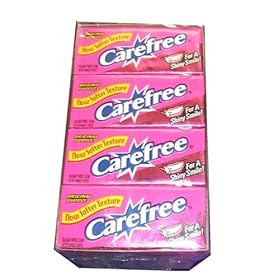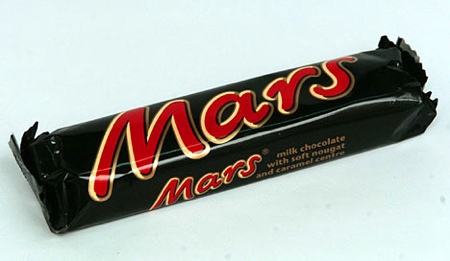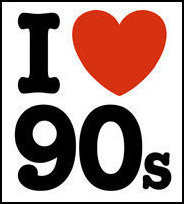 Rarely does a sitcom become as pervasive and persistently popular as Friends. It maintained a surprisingly consistent level of quality and popularity throusghout its ten-year run, particularly for a show that was based on such a simple premise. As the name implies, the subject matter in question was, put simply, friends. Apparently all it takes is a group of eclectic and mismatched personality types with a penchant for local coffee houses living in unrealistically mammoth and well-decorated Manhattan apartments to hold our attention. Who knew?
Rarely does a sitcom become as pervasive and persistently popular as Friends. It maintained a surprisingly consistent level of quality and popularity throusghout its ten-year run, particularly for a show that was based on such a simple premise. As the name implies, the subject matter in question was, put simply, friends. Apparently all it takes is a group of eclectic and mismatched personality types with a penchant for local coffee houses living in unrealistically mammoth and well-decorated Manhattan apartments to hold our attention. Who knew?Friends's large ensemble cast was a great credit to its success, utilizing six then lesser-known twenty-something actors as principals with relatively equal screen time. So many sitcoms gave us a main character or two with a smattering of conveniently prominent or absent sidekick roles, so it was refreshing to see such a strong balance of multiple main characters. Conceived by David Crane and Marta Kauffman in the early 90s, they sought to explore the lives of young adults making it on their own for the first time in a fast-paced New York setting. Kauffman and Crane teamed up with producer Kevin Bright to develop a show that captured a relatively universal experience of finding oneself post-college.
Tentatively (thankfully) entitled Insomnia Cafe, the trio pitched the show to NBC in late 1993. NBC liked the idea, so the three went to work on their pilot now somewhat less tentatively called Friends Like Us. They also liked the pilot, investing in the series that the creators now called Six of One. Who knew a show could cycle through so many terrible working titles before even going into full-scale production? Especially considering the final choice for title ended up being such a no-brainer. As Chandler Bing might say, "Could it be any simpler?"
That level of simplicity was what sold not only NBC but a vast proportion of the sitcom-viewing public on this fledgling show. The creators' original pitch for show described it as being "[...about sex, love, relationships, careers, a time in your life when everything's possible. And it's about friendship because when you're single and in the city, your friends are your family," giving the premise an open-ended array of endless scenarios, couplings, and experiences for its main characters.
As so many of us children of the 90s are just now coasting through that stage of our lives that Bright, Kauffman, and Crane envisioned as the universal connecting experience to bolster the show's appeal, it's strange to think so many of us were major fans of the show at a point in our life that in no way intersected with that of the major characters. At the time of its premiere in 1994, I was only nine years old, yet somehow my friends and I were convinced we found the show hilarious. More likely is that we initially found it a little bit confusing; a vast proportion of the humor and situations certainly must have gone straight over our heads. It was just so likable, though, that we couldn't help getting caught up in the Friends fervor,
At the time, Ross, Rachel, Monica, Chandler, Phoebe, and Joey seemed like such grown ups to me and my peers, so it's always odd catching an early episode in syndicated rerun and realizing that I'm possibly now as old as or older as they were then. If you never got into it or haven't seen any of the early seasons in a few years, you might want to invest a few hours in doing so. There's a reason the show became such a quick hit: the producers nailed their intended delivery of that universal twenty-something experience. Their pitch about your friends being your family may be a little cheesy, but it also rings true for so many of us at the stage in our life between extended adolescence and responsible parenthood,.
So much of the show's charm lay in the quirkiness and depth of its characters; without their idiosyncratic personalities and strong performances from the cast of comically gifted actors, there would be no show. The majority of the action focused on our six principal characters:
Chandler Bing
The One With All The Sarcasm. Chandler is the resident wise-cracking smartass, always quick to issue a cutting quip or a self-deprecating witticism. He's wound up pretty tightly, though his eventual marriage to Monica gave him a more playful side.
Phoebe Buffay
The One With The Offbeat, Out There Personality. Phoebe not only marched to the beat of her own drummer, she seemed to have invented a new style of drumming entirely. Her singer/songwriter escapades at the local Central Perk coffee shop feature gems like "Smelly Cat", which is indeed about a cat with a less-than-appealing odor. I suppose her eclectic early years on the street could be the source of her general oddity, so all in all she turned out pretty okay.
Rachel Green
The One With the Semi-Reformed Princess Behavior Tendencies. We first meet Rachel in the debut episode as a rain-soaked bride who left her groom at the altar, claiming she was getting married for all the wrong reasons. Once something of a spoiled brat, her reconnection with childhood friend Monica sets on her on, if not a totally straight path, at least a less wavy and more grounded one. Rachel's on-again-off-again with Ross is a major plot point throughout the show's ten-year lifespan.
Monica Gellar
The One With The Serious Neuroses. Monica is as obsessive compulsive and anal retentive as they come, so it's a good thing Courtney Cox managed to make her so charming. The show had originally wanted to cast Cox as Rachel, but she preferred the Monica role and convinced them she could make it her own. Monica is Ross's sister, Rachel's childhood friend, and Chandler's eventual wife. Oh, and she also used to be fat--that's one of the show's favorite retrospective punchlines, often through fat suit technology.
Ross Gellar
The One With the All the Lovable Nerdiness. It takes a special kind of endearingly intellectual guy to not only choose a career path in paleontology but also to bore his friends with the details. Ross's first wife turned out to be a lesbian, though the truth didn't come out until after she became pregnant with his son. Ross excels in karate, is a sometime-monkey daddy, and has compelling evidence that he and Rachel were indeed on a break at that crucial juncture in their relationship.
Joey Tribbiani
The One With Limited Intellectual Capacity. It's okay, he gets all the ladies, so it's really sort of a trade-off. All he has to do was issue a signature, "How you doin'?" and the women were putty in his hands. Joey and Chandler were roommates for a bulk of the sitcom's run, with the two engaging in all sorts of comedic apartment-sharing situations. He is a sometimes-working actor, most notably for his role as Dr. Drake Ramoray on Days of Our Lives. Joey was the only one to get his one spin-off, though I think we all know how that turned out.
Friends kept the writing sharp over its extensive ten-year run, a stretch that would leave many lesser sitcoms grasping at cop-out storylines. That's not to say Friends didn't use its fair share of guerrilla ratings tactics: inane plot twists, surprise couplings, and most notably the end-of-season leave-us-on-the-edge-of-our-seats-and-stick-us-with-three-months-of-reruns-why-don't-you cliffhangers. Those things were brutal. What's that? Ross said Rachel's name instead of Emily's at his wedding? And now we have all summer to contemplate the repercussions? Awesome. I was hoping to work on my tan and read the classics, but now I'm stuck pondering this one for all of my waking hours until it can be resolved in the fall season premiere.
It was all part of the show's signature charm, though. Sure, there was a fair amount of reliance on gimmicks and well-worn sitcom territory, but the cast chemistry and smart writing brought in all together in a new way. If you flip on your TV at any given time of evening or night, you're pretty likely to find Friends still playing on at least three or four different channels in multiple timeslots. It's perseverance in syndication speaks volumes to its impact and success. More importantly, though, it's funny. When so few sitcoms actually make us laugh, it's a legitimate claim to fame to be The One With All of the Good Jokes.


























